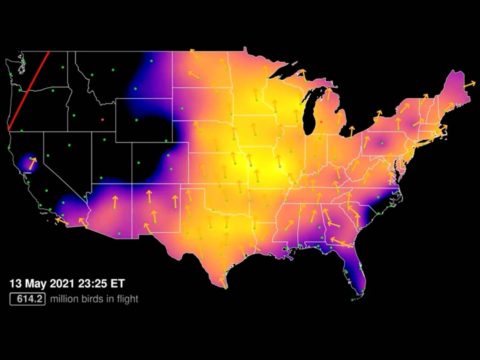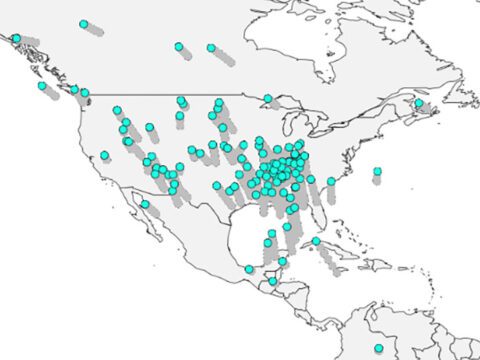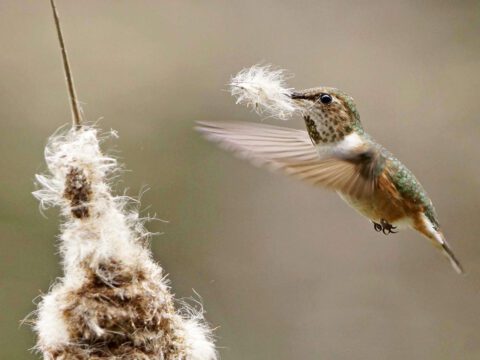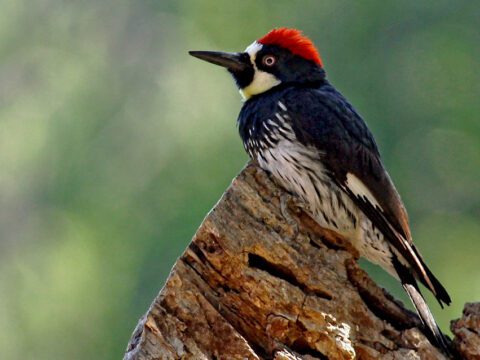Pop-ups Take the Long Way Home After Recording Whale Sounds
By Kevin White
October 15, 2010
Saving the world’s whales by listening to them
It was birds—and bird song—that first inspired Charles Walcott, then-director of the Cornell Lab, to join forces with a young biologist-engineer named Christopher W. Clark. They created our Bioacoustics Research Program (BRP), in 1987. Clark soon extended his interest in song into the dark ocean depths, where sound is how most animals communicate and “see” what’s going on. Now BRP works all over the globe to study how whales cope with the increasing din of shipping, oil and gas exploration, and sonar.
To listen in on nature, we’ve invented devices that sit on the seafloor and automatically record what they hear. Hundreds of these machines, called “pop-ups,” gather critical information about marine animals each year. When their work is completed the units pop back to the surface on command, and a retrieval ship returns their data to expert analysts at the Cornell Lab.
Our engineers have worked hard to ensure a very high recovery rate in the ocean’s unpredictable environment. Despite the hazards the units face—being snagged by trawlers, tossed by hurricanes, tangled on rocks, and even battered by the very animals they’re recording—more than 90 percent come back right on schedule.
On the rare occasion when a pop-up goes missing, a reward offer stenciled on each unit helps ensure we get it back, along with its priceless data. Some pop-ups have nearly circumnavigated the globe before being returned years later. When they do, we often get to hear a good yarn about their travels.
For instance, in 2003, bad weather and intense waves tore pop-up #055 loose from its mooring in shallow water off South Carolina. It took another five years before someone found it—in Turks and Caicos, in the Caribbean. The pop-up had floated around the Atlantic to Europe, down the coast of West Africa, and back across the Atlantic to land on a Caribbean island.
A colleague at the University of Alaska, Fairbanks, used pop-ups to study whether migratory killer whales off Alaska’s Pribilof Islands were the same animals sometimes spotted in Monterey Bay, California. One of her units surfaced off-schedule, but a local fisherman discovered it before currents swept it out of the bay, preserving evidence of the whales’ 2,500-mile migration.
A Dalhousie University collaborator was listening to endangered bottlenose whales off Nova Scotia when one of her pop-ups went missing. It turned up on the French-controlled island of St. Pierre, 200 miles away off the coast of Newfoundland. The device and the discoverer became minor celebrities: it was nicknamed “La Machine,” he appeared on local television, and local dignitaries honored both with a champagne toast before the device came back to us.
In 2007 a pop-up placed more than 10,000 feet deep in the middle of the Atlantic became snagged. Three years later, it surfaced after a recovery vessel jarred the instrumentation package loose on a return visit. It recently arrived home intact, containing a fresh store of data from one of the most remote areas of the Atlantic Ocean.
We can enjoy the occasional unplanned pop-up mission because of the great majority that go off without a hitch. We’ve now logged more than 1,000 successful deployments, enabling us to learn about virtually every species of whale in the Atlantic, Pacific, Arctic, and Southern Oceans.
In July, as the Deepwater Horizon oil spill worsened, we scrambled to deploy 21 pop-ups along the continental shelf from Texas to central Florida. The units are listening for the Gulf’s poorly known sperm and Bryde’s whale populations. In December, we’ll recover those units, replace them with new ones, and analyze the data to inform NOAA how the spill may be affecting the two species. The work continues—no matter where the units pop up.
Kevin White is Marketing Engineer for the Bioacoustics Research Program.
Originally published in the Autumn 2010 issue of BirdScope.

All About Birds
is a free resource
Available for everyone,
funded by donors like you
American Kestrel by Blair Dudeck / Macaulay Library




